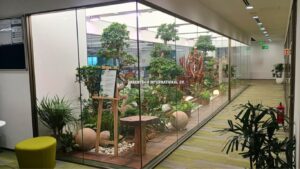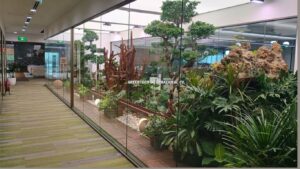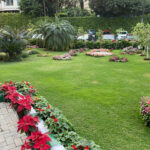Creating a Stunning Big Terrarium: A Complete Guide
Terrariums are miniature ecosystems that bring a touch of nature indoors. While small terrariums are popular, big terrariums make a bold statement, offering more space for creativity and a wider variety of plants. Whether you’re a plant enthusiast or a beginner looking for a striking centerpiece, a large terrarium can be a fantastic addition to your home or office.


Why Choose a Big Terrarium?
- More Design Flexibility – Larger containers allow for intricate landscapes, multiple plant species, and decorative elements like rocks, driftwood, and figurines.
- Better for Plant Growth – Plants have more room to spread their roots, reducing competition for space and nutrients.
- Impressive Visual Impact – A big terrarium becomes a focal point in any room, adding greenery and tranquility.
- Supports Diverse Ecosystems – You can include humidity-loving tropical plants, succulents (in open terrariums), or even small reptiles and amphibians in bioactive setups.
Choosing the Right Container
The container is the foundation of your terrarium. For a large terrarium, consider:
- Glass Tanks (Aquariums work well)
- Wardian Cases (Elegant, Victorian-style enclosures)
- Glass Jars & Bowls (Oversized options like apothecary jars)
- Custom-Built Terrariums (For a unique shape or design)
Ensure your container has:
✔ Good ventilation (for open terrariums) or a tight lid (for closed, humid environments).
✔ Enough depth for root growth and substrate layers.
Best Plants for a Large Terrarium
For Closed Terrariums (High Humidity):
- Ferns (Maidenhair, Bird’s Nest)
- Fittonia (Nerve Plant)
- Pothos & Philodendrons
- Mosses (Sheet Moss, Pillow Moss)
- Orchids (Mini varieties)
For Open Terrariums (Low Humidity):
- Succulents (Echeveria, Haworthia)
- Air Plants (Tillandsia)
- Cacti (Small varieties)
- Peperomia
Step-by-Step Guide to Building a Big Terrarium
1. Layer the Base
- Drainage Layer: Start with pebbles or LECA clay balls to prevent waterlogging.
- Charcoal Layer: Helps filter the water and keep the terrarium fresh.
- Substrate Layer: Use a well-draining potting mix (for succulents) or moisture-retentive soil (for tropical plants).
2. Arrange Hardscape & Plants
- Place rocks, wood, or decorative elements first.
- Plant larger plants in the back, smaller ones in front.
- Leave space for growth—terrarium plants can expand over time.
3. Add Finishing Touches
- Moss for ground cover.
- Mini figurines, crystals, or sand patterns for extra charm.
- Mist lightly (for closed terrariums) or water sparingly (for open ones).
Maintenance Tips for Big Terrariums
- Light: Place in bright, indirect light (avoid direct sun for closed terrariums).
- Watering: Closed terrariums need minimal watering (condensation should self-regulate). Open terrariums need occasional watering when soil dries out.
- Pruning: Trim overgrown plants to maintain shape.
- Cleaning: Wipe glass occasionally to keep it clear.
Creative Big Terrarium Ideas
- Jungle-Themed Terrarium – Lush ferns, vines, and hidden figurines.
- Desert Landscape – Sand, succulents, and miniature cacti.
- Fairy Garden – Whimsical décor with tiny houses and bridges.
- Aqua-Terrarium (Paludarium) – Half-water, half-land setup with aquatic plants.
Final Thoughts
A big terrarium is more than just a plant display—it’s a living art piece. With the right container, plants, and care, you can create a thriving mini-ecosystem that enhances your space. Whether you prefer a tropical paradise or a desert oasis, the possibilities are endless!
Ready to build your own large terrarium? Start with a spacious glass container, pick your favorite plants, and let your creativity grow! 🌿
Do you have a big terrarium at home? Share your photos and tips in the comments!







